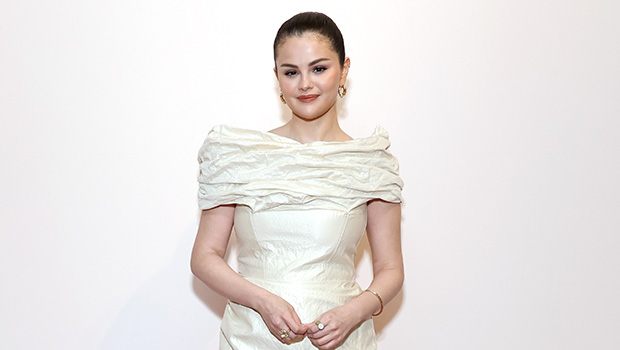By
Bloomberg
Published
Mar 21, 2024
When Nike Inc. reports its third-quarter earnings on Thursday, investors will be looking for signs that the world’s biggest sportswear company is beating back a growing field of challengers.
Nike Chief Executive Officer John Donahoe should learn from his counterpart at Adidas AG, Bjorn Gulden, whose efforts to energize the company following its costly divorce from Kanye West in 2022 are starting to pay off.
For years, Nike and Adidas were able to serve customers demanding clothing to play sport in as well as those following fashion trends. Now they face rivals on all fronts, from On Holding AG and Deckers Outdoor Corp.’s Hoka, in running, to Lululemon Athletica Inc. in athleisure and Amer Sports Inc.’s Arc’teryx in premium performance and lifestyle wear. This year, challenger brands are set to expand revenue by an average of 17%, almost three times the incumbents’ estimated 6%, according to analysts at RBC Capital Markets. (1)
Amid these incursions, the giants look increasingly like mid-market fashion brands, so they must have their fingers on the pulse of the latest trends. For Nike, there is the extra burden of regaining its historic prowess in sports clothing.
Both Nike and Adidas have become too reliant on products that burn bright and then fade, with nothing to take their place. In the case of Nike it has primarily relied on its retro sneakers led by the Air Jordan 1 to rally sales. Over the past decade, Adidas has cycled through the Stan Smith sneaker, the Yeezy collaboration with Ye and now its retro Terrace styles.
In the shifting sportswear landscape, they need to develop a constant stream of fresh in-demand items. They must also be able to react quickly to new fashion narratives as they emerge.
That’s where Adidas is taking a lead over Nike. Adidas’s Gulden, who became CEO in January 2023, has been willing to back winners, for example noting the buzz around Terrace styles such as the Samba and Gazelle after a collaboration with Gucci in 2022, and ramping up production last year.
He also appears to be anticipating where the look might go next, for example, extending Terrace into running by relaunching the SL72 — which has Olympic heritage — and digging into the archive for low-fitting sneakers after spotting them on the catwalks. And Gulden has noticed the increasing crossover between fashion and fitness, making performance wear more stylish and dressing athletes in current looks; the Real Madrid team is wearing its cutting-edge Y3 brand. Of course, there is still a risk Adidas becomes too reliant on the Terrace franchise. One way to avoid this would be to extend its collaboration with Jerry Lorenzo’s Fear of God brand, potentially even moving from athletic gear into more formal clothing.
Gulden offers a model for Nike’s tentative turnaround efforts: His decisions around emerging trends seem more akin to a fashion retailer’s instinct for best-sellers. In contrast, a Williams Trading analyst wrote in a sell note on Nike this week that it “appears as if consultants, rather than Nike experts, are leading strategy decisions.”
The market leader has struggled to get out of an innovation slump that has tarnished its reputation as a sportswear icon. Under Donahoe, the company shifted from being organized around sports categories such as running or swimming to traditional departments such as women’s, men’s and children’s. It sharpened its focus on its digital business, selling directly to consumers. But by becoming a combination of a tech and luxury company, it dulled its product edge, while it has also seen the departure of several key executives.
Nike hasn’t had a revolutionary sneaker since the Vaporfly in 2020. And it has recently bungled several product rollouts. Take the delayed launch of the Air Force 1 Low “Certified Lover Boy” sneakers in partnership with Drake. By the time the model hit the market, consumers were bored with the shoe after so many teasers. It also roused ire from baseball fans and players that this year’s redesigned uniforms look cheap.
Nike declined to comment, but the company is aware that it’s falling behind. Donahoe told investors in December, when it delivered a disappointing revenue outlook, that he planned $2 billion in cumulative cost savings over the next three years to kickstart a product-development cycle set to begin with the Paris Olympics. He said this included “new franchises, concepts and platforms.” Investors will be looking for more details on the fightback on Thursday.
Both companies must also reconnect with a broader range of customers again. They prioritized their own online and physical stores in an effort to gain greater control and avoid markdowns. But this gave oxygen to smaller rivals. Gulden has set about wooing retailers. Nike is doing the same, but must intensity these efforts.
It’s also worth remembering that Adidas is still early on in its turnaround efforts. It forecasts just €500 million ($543 million) of operating profit this year, compared with almost €2 billion in 2021. Gulden is aiming to lift its operating margin to 10%. Nike, for all its challenges, is expected to delver 12.3% in the year to the end of May, according to the Bloomberg consensus of analysts’ estimates.
Still, Gulden also unveiled a new Adidas marketing slogan: You Got This. Investors believe he has. Donahoe must convince shareholders that he is similarly on message: Not just talking about revitalizing the company, but doing it too.






